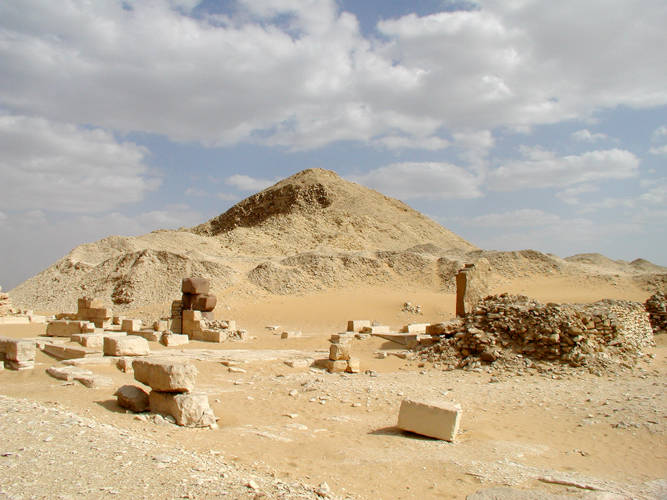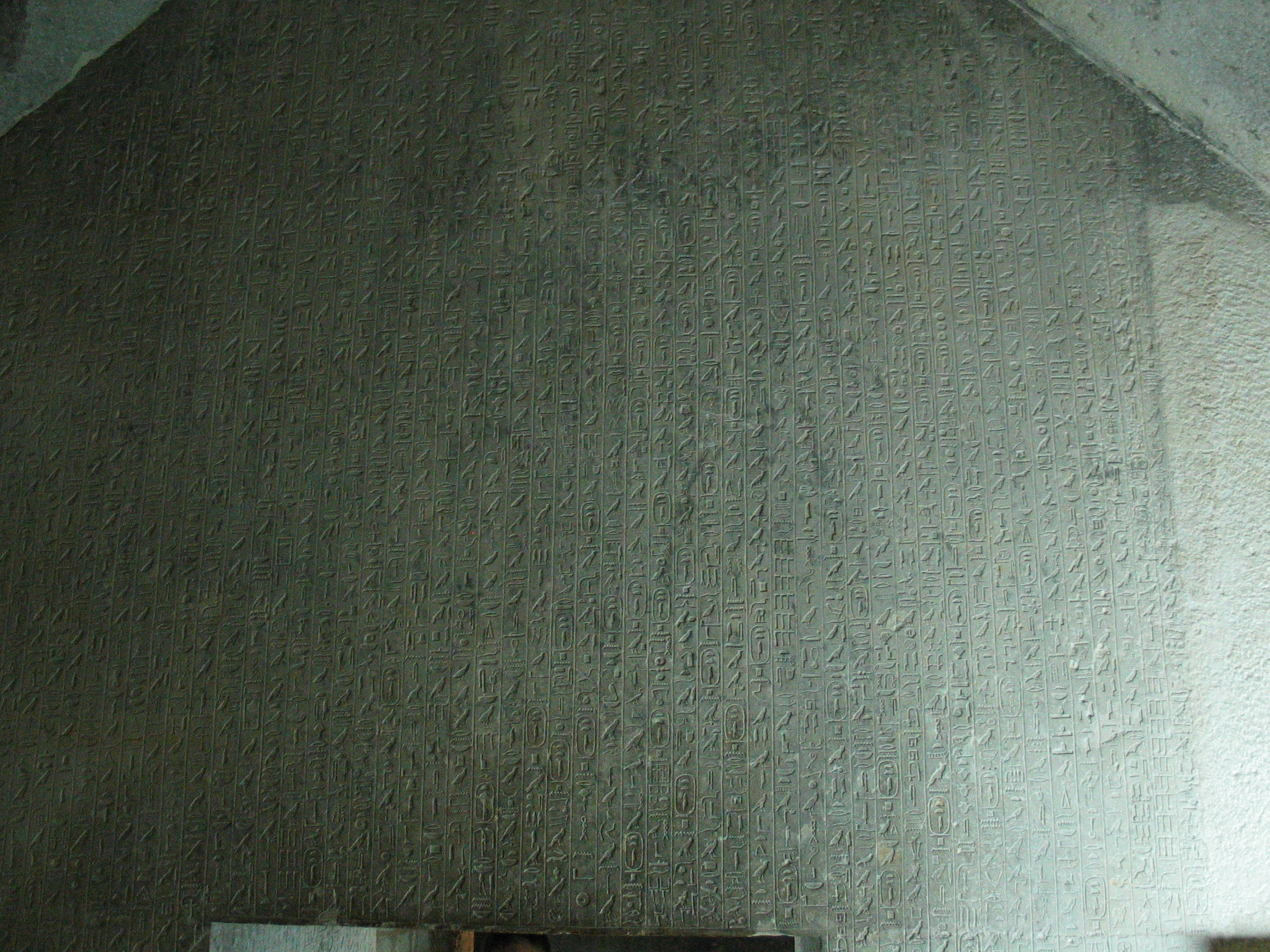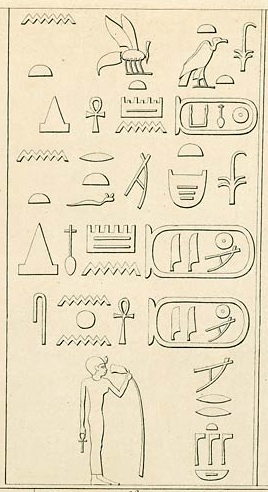|
Neith (wife Of Pepi II)
Neith was an ancient Egyptian queen consort, one of the principal queens of the Old Kingdom pharaoh Pepi II Neferkare, who ruled (c. 2278 BC – c. 2184 BC). Queen Neith was named after goddess Neith. Family Neith is thought to have been a daughter of the pharaoh Pepi I and queen Ankhesenpepi I, making her aunt and cousin to pharaoh Pepi II.Tyldesley, Joyce. Chronicle of the Queens of Egypt. p.61 - 63. Thames & Hudson. 2006. Neith may be the mother of King Nemtyemsaf II., p.77 There is a legend about Queen Nitocris who, if she indeed existed at all, may have been a daughter of Neith. Titles Her titles as a royal daughter include: King’s Daughter (''zȝt-nswt''), Eldest King’s Daughter of his body (''zȝt-nswt-smswt-n-ẖt.f''), Eldest King’s Daughter of his body of Mennefer-Meryre (''zȝt-nswt-smswt-n-ẖt.f-mn-nfr-mry-rˁ''), and Hereditary Princess (''jryt-pˁt''), As a wife of the pharaoh she used the titles: King’s Wife (''hmt-nisw''), Beloved King’s Wife of Men ... [...More Info...] [...Related Items...] OR: [Wikipedia] [Google] [Baidu] |
Neith
Neith ( grc-koi, Νηΐθ, a borrowing of the Demotic (Egyptian), Demotic form egy, nt, likely originally to have been nrt "she is the terrifying one"; Coptic language, Coptic: ⲛⲏⲓⲧ; also spelled Nit, Net, or Neit) was an early ancient Egyptian deities, ancient Egyptian deity. She was said to be the first and the prime creator, who created the universe and all it contains, and that she governs how it functions. She was the goddess of the cosmos, fate, wisdom, water, rivers, mothers, childbirth, hunting, weaving, and war. Neith was the tutelary deity of Sais, Egypt, Sais ( cop, ⲥⲁⲓ ''Sai'' from Egyptian ''Zau''), where her cult was centered in the western Nile Delta of Lower Egypt. It is attested as early as the First Dynasty of Egypt, First Dynasty. Neith was also one of the three tutelary deities of the southern city of Latopolis ( grc-koi, Λατόπολις) or Esna (Snē) (Sahidic Coptic: from earlier Egyptian: ''t3-snt'', also ''iwnyt'') Latopolis was locat ... [...More Info...] [...Related Items...] OR: [Wikipedia] [Google] [Baidu] |
Old Kingdom
In ancient Egyptian history, the Old Kingdom is the period spanning c. 2700–2200 BC. It is also known as the "Age of the Pyramids" or the "Age of the Pyramid Builders", as it encompasses the reigns of the great pyramid-builders of the Fourth Dynasty, such as King Sneferu, who perfected the art of pyramid-building, and the kings Khufu, Khafre and Menkaure, who constructed the pyramids at Giza. Egypt attained its first sustained peak of civilization during the Old Kingdom, the first of three so-called "Kingdom" periods (followed by the Middle Kingdom and New Kingdom), which mark the high points of civilization in the lower Nile Valley. The concept of an "Old Kingdom" as one of three "golden ages" was coined in 1845 by the German Egyptologist Baron von Bunsen, and its definition would evolve significantly throughout the 19th and the 20th centuries. Not only was the last king of the Early Dynastic Period related to the first two kings of the Old Kingdom, but the "capital", ... [...More Info...] [...Related Items...] OR: [Wikipedia] [Google] [Baidu] |
Pepi II Neferkare
Pepi II Neferkare (2284 BC – after 2247 BC, probably either 2216 or 2184 BC) was a pharaoh of the Sixth Dynasty in Egypt's Old Kingdom who reigned from 2278 BC. His second name, Neferkare (''Nefer-ka-Re''), means "Beautiful is the Ka of Re". He succeeded to the throne at age six, after the death of Merenre I. Pepi II's reign marked a sharp decline of the Old Kingdom. As the power of the nomarchs grew, the power of the pharaoh declined. With no dominant central power, local nobles began raiding each other's territories and the Old Kingdom came to an end within a couple of years after the close of Pepi II's reign. Early years of Pepi II's reign He was traditionally thought to be the son of Pepi I and Queen Ankhesenpepi II, but the South Saqqara Stone annals record that Merenre had a minimum reign of 11 years. Several 6th Dynasty royal seals and stone blocks – the latter of which were found within the funerary temple of Queen Ankhesenpepi II, the known m ... [...More Info...] [...Related Items...] OR: [Wikipedia] [Google] [Baidu] |
Pepi I
Pepi I Meryre (also Pepy I) was an ancient Egyptian pharaoh, third king of the Sixth Dynasty of Egypt, who ruled for over 40 years at the turn of the 24th and 23rd centuries BC, toward the end of the Old Kingdom period. He was the son of Teti, the founder of the dynasty, and ascended the throne only after the brief intervening reign of the shadowy Userkare. His mother was Iput, who may have been a daughter of Unas, the final ruler of the preceding Fifth Dynasty. Pepi I, who had at least six consorts, was succeeded by his son Merenre Nemtyemsaf I, with whom he may have shared power in a coregency at the very end of his reign. Pepi II Neferkare, who might also have been Pepi I's son, succeeded Merenre. Several difficulties accumulated during Pepi's reign, beginning with the possible murder of his father and the ensuing reign of Userkare. Later, probably after his twentieth year of reign, Pepi faced a harem conspiracy hatched by one of his consorts who m ... [...More Info...] [...Related Items...] OR: [Wikipedia] [Google] [Baidu] |
Ankhesenpepi I
Ankhesenpepi I (also Ankhenespepi I or Ankhenesmeryre I) was a queen consort during the Sixth Dynasty of Egypt. Biography Ankhesenpepi was a daughter of the female vizier Nebet and her husband Khui, nomarch of Abydos. Ankhesenpepi's sister was Ankhenespepi II, and her brother was Vizier Djau. Both sisters – Ankhesenpepi I and II – were married to Pharaoh Pepi I whose throne name was ''Meryre;'' their name was probably taken when the marriage took place, since it means "Her life belongs to Pepi/Meryre". Both queens gave birth to successors of Pepi: the son of Ankhesenpepi I was Merenre Nemtyemsaf I, who ruled only for a few years; the son of Ankhenespepi II was Pepi II, who succeeded after Nemtyemsaf's death.Dodson & Hilton, p.71 She is mentioned together with her sister on their brother's stela in Abydos, also, at her pyramid, on an inscription now in Berlin Berlin ( , ) is the capital and largest city of Germany by both area and population. Its 3.7 million inh ... [...More Info...] [...Related Items...] OR: [Wikipedia] [Google] [Baidu] |
Nemtyemsaf II
Merenre Nemtyemsaf II was an ancient Egyptian pharaoh, the sixth and penultimate ruler of the 6th Dynasty. He reigned for 1 year and 1 month in the first half of the 22nd century BC, at the very end of the Old Kingdom period. Nemtyemsaf II likely ascended the throne as an old man, succeeding his long-lived father Pepi II Neferkare at a time when the power of the pharaoh was crumbling. Attestations Merenre Nemtyemsaf II is attested on the 4th line, column 6 of the Turin canon, a king list redacted in the early Ramesside Period. Although his name is lost in the canon, the duration of its reign is still readable as 1 year and 1 month, following the reign of Pepi II Neferkare.Darrell D. Baker: ''The Encyclopedia of the Pharaohs: Volume I - Predynastic to the Twentieth Dynasty 3300–1069 BC'', Stacey International, , 2008, p. 211–212 Nemtyemsaf II is also attested on the 39th entry of the Abydos King List, which dates to the reign of Seti I and constitutes one of the best pre ... [...More Info...] [...Related Items...] OR: [Wikipedia] [Google] [Baidu] |
Nitocris
Nitocris ( el, Νίτωκρις) possibly was the last pharaoh of ancient Egypt's Sixth Dynasty. Her name is found in Herodotus' ''Histories'' (430BC) and in writings by the 3rd-century BC Manetho, but her historicity has been questioned. If she was in fact a historical person, then she may have been an interregnum queen, the sister of Merenre Nemtyemsaf II and the daughter of Pepi II and Queen Neith. Alternatively, the Egyptologist Kim Ryholt has argued that Nitocris is legendary and derives from the historical male pharaoh Neitiqerty Siptah, who succeeded Merenre Nemtyemsaf II at the transition between the Old Kingdom and First Intermediate Period. Greek tradition According to Herodotus (''Histories'' ii-100), she invited the murderers of her brother, the "king of Egypt", to a banquet, then killed them by flooding the sealed room with the Nile. :: ... itocrissucceeded her brother. He had been the king of Egypt, and he had been put to death by his subjects, who then placed her u ... [...More Info...] [...Related Items...] OR: [Wikipedia] [Google] [Baidu] |
Pepi II
Pepi II Neferkare (2284 BC – after 2247 BC, probably either 2216 or 2184 BC) was a pharaoh of the Sixth Dynasty in Egypt's Old Kingdom who reigned from 2278 BC. His second name, Neferkare (''Nefer-ka-Re''), means "Beautiful is the Ka of Re". He succeeded to the throne at age six, after the death of Merenre I. Pepi II's reign marked a sharp decline of the Old Kingdom. As the power of the nomarchs grew, the power of the pharaoh declined. With no dominant central power, local nobles began raiding each other's territories and the Old Kingdom came to an end within a couple of years after the close of Pepi II's reign. Early years of Pepi II's reign He was traditionally thought to be the son of Pepi I and Queen Ankhesenpepi II, but the South Saqqara Stone annals record that Merenre had a minimum reign of 11 years. Several 6th Dynasty royal seals and stone blocks – the latter of which were found within the funerary temple of Queen Ankhesenpepi II, the known mo ... [...More Info...] [...Related Items...] OR: [Wikipedia] [Google] [Baidu] |
Pyramid Texts
The Pyramid Texts are the oldest ancient Egyptian funerary texts, dating to the late Old Kingdom. They are the earliest known corpus of ancient Egyptian religious texts. Written in Old Egyptian, the pyramid texts were carved onto the subterranean walls and sarcophagi of pyramids at Saqqara from the end of the Fifth Dynasty, and throughout the Sixth Dynasty of the Old Kingdom, and into the Eighth Dynasty of the First Intermediate Period. The oldest of the texts have been dated to c. 2400–2300 BCE. Unlike the later Coffin Texts and Book of the Dead, the Pyramid Texts were reserved only for the pharaoh and were not illustrated. The use and occurrence of Pyramid Texts changed between the Old, Middle, and New Kingdoms of Ancient Egypt. During the Old Kingdom (2686 BCE – 2181 BCE), Pyramid Texts could be found in the pyramids of kings as well as three queens, named Wedjebten, Neith, and Iput. During the Middle Kingdom (2055 BCE – 1650 BCE), Pyramid Texts were not written in t ... [...More Info...] [...Related Items...] OR: [Wikipedia] [Google] [Baidu] |
Ankhesenpepi II
Ankhesenpepi II or Ankhesenmeryre II was a queen consort during the Sixth Dynasty of Egypt. She was the wife of Kings Pepi I and Merenre Nemtyemsaf I, and the mother of Pepi II. She likely served as regent during the minority of her son. She was buried in a pyramid in Saqqara. Biography Ankhesenpepi II was the daughter of Khui and the female vizier Nebet. Her sister Ankhesenpepi I was also married to King Pepi I and her brother Djau served as vizier.Aidan Dodson & Dyan Hilton: The Complete Royal Families of Ancient Egypt. Thames & Hudson, 2004, , pp.71-74 Both Ankhesenpepi II and her sister Ankhesenpepi I were married to Pharaoh Pepi I whose throne name was ''Meryre''; their name was taken when the marriage took place, since it means "Her life belongs to Pepi/Meryre". Both queens gave birth to the kings: the son of Ankhesenpepi I was Merenre Nemtyemsaf I, who ruled only for a few years; the son of Ankhesenpepi II was Pepi II, who succeeded after Nemtyemsaf's death. Pepi II w ... [...More Info...] [...Related Items...] OR: [Wikipedia] [Google] [Baidu] |








